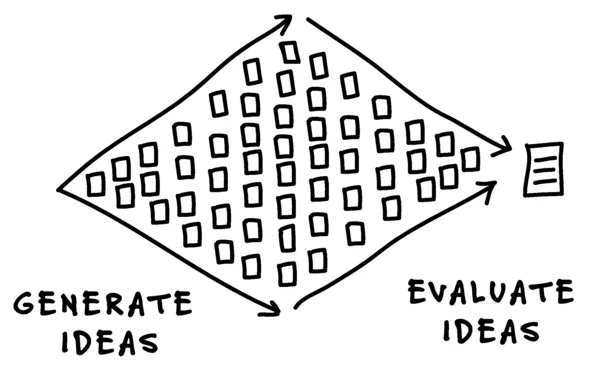
- 192 pages
- English
- ePUB (mobile friendly)
- Available on iOS & Android
About this book
The struggle with balancing creative products that are innovative, technically feasible, and financially sound is one designers and web professionals go through every day. The Design Studio Method is a creative problem solving process that allows you to quickly generate ideas, evaluate them, and reach consensus, achieving that balancing act. Brian Sullivan's The Design Studio Method gives answers that you have been looking for, showing you how to be innovative and efficient without sacrificing quality and collaboration. This book simplifies the complicated method, explaining each step, each participant's involvement, and how to adapt the method to your needs.
The Design Studio Method provides step-by-step procedures to ensure your success. From illumination, to generation, to presentation, all the way to iteration, this book provides the road map you'll need to start generating innovate products.
- Shows you how to involve all members of the creative process—from clients to directors—so that everyone participates, critiques, and innovates.
- Features real-world examples of Design Studio projects that highlight the successes of this method and ways to adapt it to your needs.
- Includes a website that showcases videos covering each step of the method and other procedures that crop up along the way.
Frequently asked questions
- Essential is ideal for learners and professionals who enjoy exploring a wide range of subjects. Access the Essential Library with 800,000+ trusted titles and best-sellers across business, personal growth, and the humanities. Includes unlimited reading time and Standard Read Aloud voice.
- Complete: Perfect for advanced learners and researchers needing full, unrestricted access. Unlock 1.4M+ books across hundreds of subjects, including academic and specialized titles. The Complete Plan also includes advanced features like Premium Read Aloud and Research Assistant.
Please note we cannot support devices running on iOS 13 and Android 7 or earlier. Learn more about using the app.
Information
PART 1
Processes
CHAPTER 1
Book Overview

- People generate ideas by sketching their concepts.
- A group comes together to show and critique other people's sketches.
- Based upon the group's feedback, concepts get further refined.
Advantages of Design Studios
- Design studios are fast. In most cases, design studios can be done in a few hours or days. This method is ideal for aggressive deadlines. Plus, design studios fit nicely into rapid development processes, such as Agile, Scrum, or Extreme Programming.
- Design studios help you to visualize complex problems more easily. You can more easily see relationships and make associations in a design studio than by reading a document or listening to another person. You visually see problems and solutions.
- Design studios allow you to share knowledge. You should include a cross-functional team of people with different backgrounds and experiences. Concepts get discussed from multiple viewpoints, which enrich and strengthen the final design.
- Design studios promote team cohesiveness. By spending time together, participants create a shared vision for the final design. Their commitment will be based upon their effort spent creating and evaluating the different concepts. Broken teams can heal.
- Design studios help you to get early commitment on design direction. When a design studio ends, the project team should know its design direction. As you move to production, the design will continue to be refined, but the design direction should be set.
- Design studios can help you overcome communication barriers. Participants must illustrate their ideas in a design studio. Since sketches will contain universal symbols of lines, circles, squares, and words, you can more easily overcome language barriers.
Where Do Design Studios Fit into a Product Workflow?

- Listening to people present their sketches.
- Asking and answering questions to clarify their sketches.
- Grouping together similar-looking sketches.
- Naming a group category with the other participants.
- Evaluating the positive and negative aspects of the various sketches.
- Voting on the most promising sketches.
- Re-sketching new ideas based on lessons learned in the design studio.
- Mashing up two different sketches on a whiteboard.
- Making decisions together to create a common vision.
Design Studios Maximize Your Design Freedom
- Sketches. Designers use freehand sketches to visually think about a problem or a potential solution. These drawings do not represent the finished work.
- Wireframes. A wireframe is a visual representation of how a page or screen might appear to a customer. Designers use wireframes to flesh out the details of a design.
- Prototypes. A prototype is a simulation of a product (or feature) to evaluate a design in a test environment. The prototype mimics what a customer may see in production.
- Final Deliverables. Final deliverables include page designs (or comps), cascading style sheets, front-end code, and more used by the site or app in a product release.

Design Studios Prevent Escalation of Commitment
Table of contents
- Cover
- Half Title
- Title Page
- Copyright Page
- Table of Contents
- Acknowledgements
- Introduction
- Part 1: Processes
- Part 2: Procedures
- Part 3: Advanced Topics
- Index